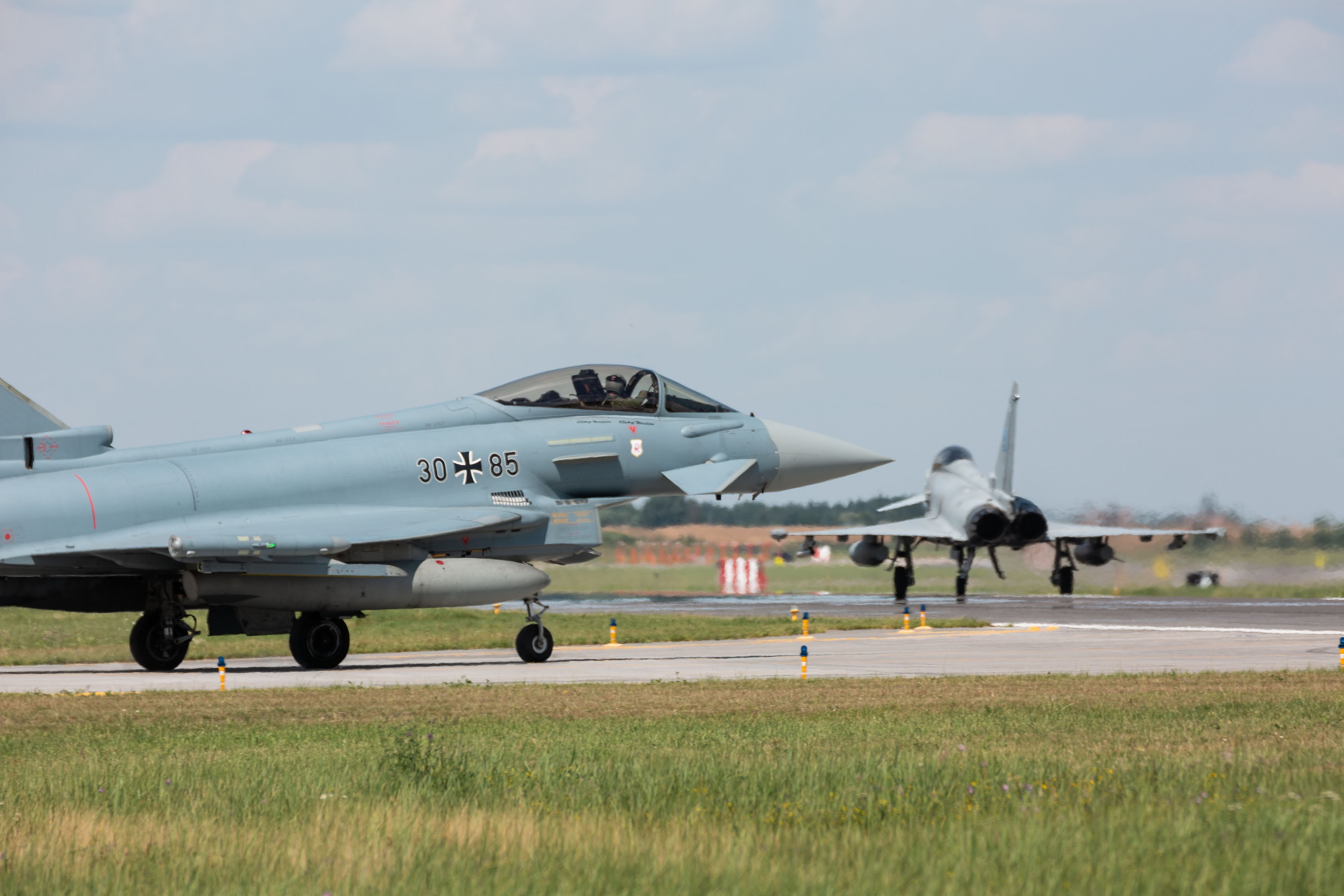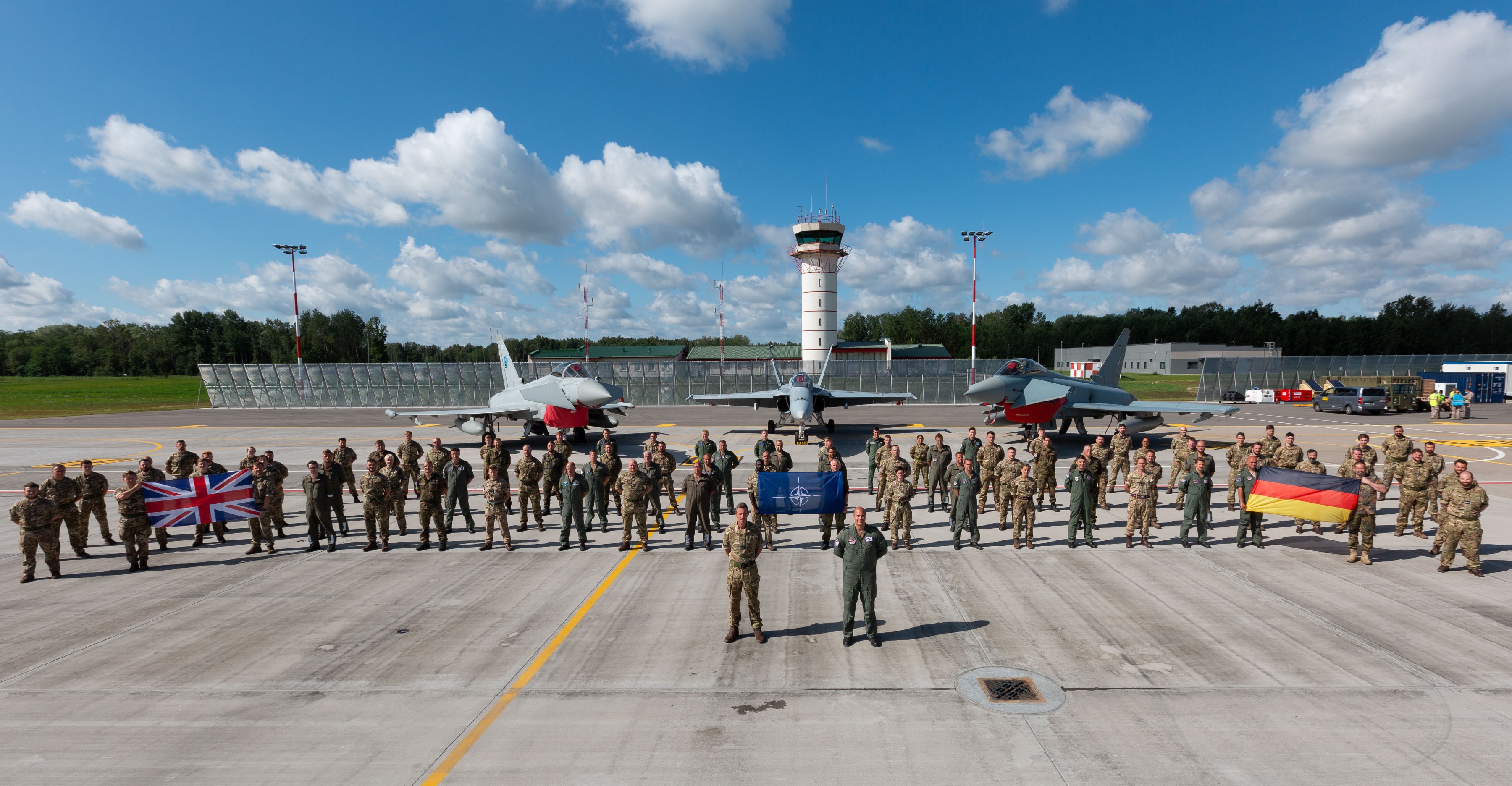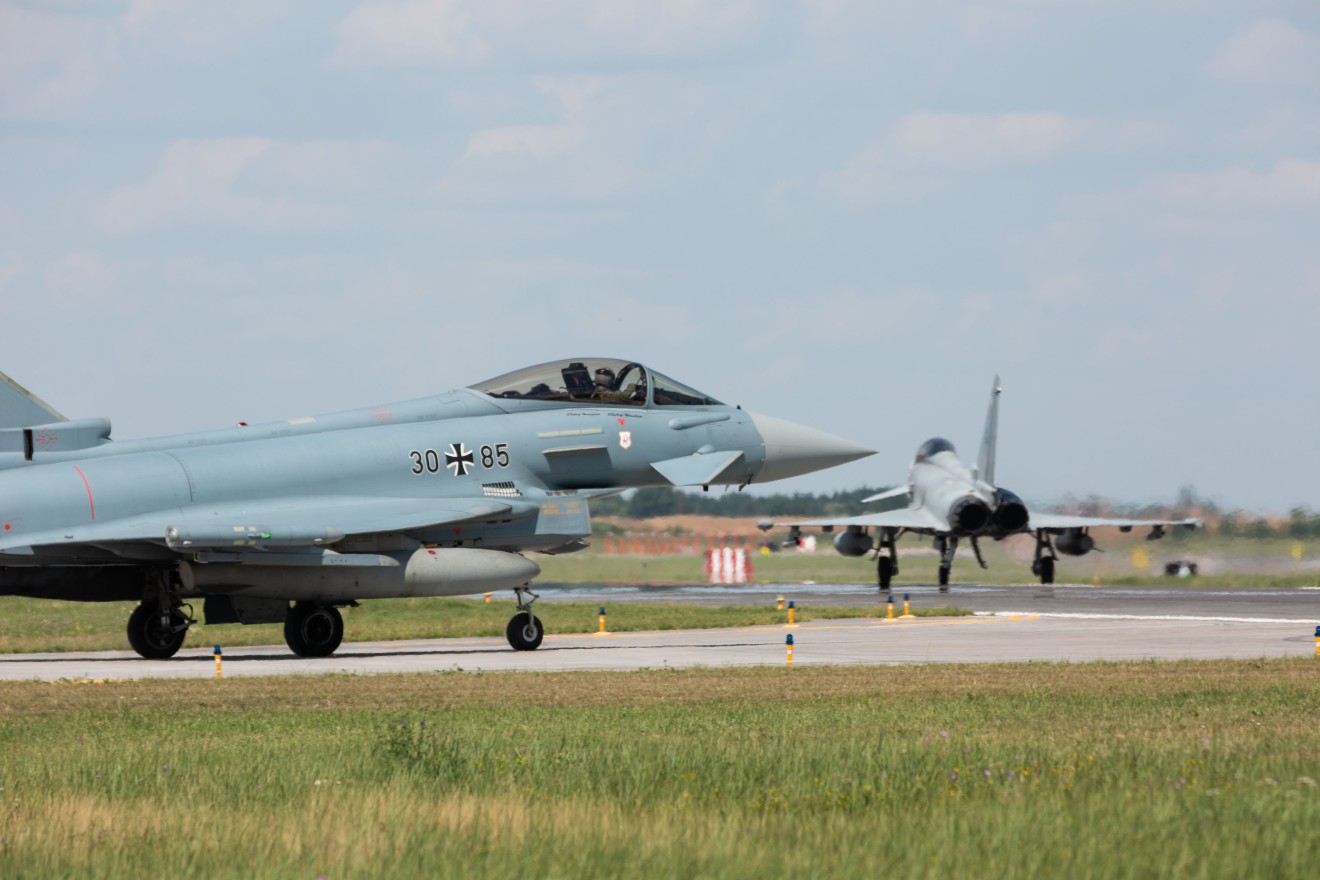The exercise was the first time a German Air Force Eurofighter detachment became embedded within an operational RAF Expeditionary Air Wing. It was designed to prove a ‘Plug & Fight’ concept and allowed the two forces to carry out a sustained period of interoperability training.
Both Air Forces regularly carry out NATO Air Policing missions and they train together on a regular basis, but this was a unique situation because the training was conducted in an operational setting.
“It was an interesting and rewarding exercise working closely with our Luftwaffe colleagues while deployed to Lithuania,” says Wing Commander Stu Gwinnutt, Commander, 135 Expeditionary Air Wing.
“We were able to demonstrate a high degree of interoperability with our Eurofighter Typhoon aircraft, while highlighting areas of potential for the future.
“We learned a lot from each other on a professional basis and made new friends as part of a combined UK–German Team; it’s been one of the many highlights of the deployment.”

During the exercise, the pilots carried out an intensive package of sorties, with one German and one UK aircraft, flying as pairs to conduct practice intercepts and what is known as basic fighter manoeuvres.
The pilots then moved on to include ‘scramble starts’ and Quick Reaction Alert take-offs to then carry out further practice intercepts. These practice intercepts were conducted against one of the other 6 Squadron Typhoons which acted as the target aircraft.
Lieutenant Colonel Andy Beckmann, German Detachment Commanding Officer, says: “It is always very interesting to take part in a multi-national mission or exercise.
To prove the ‘Plug & Fight’ concept made it an even more exciting task because we knew we had to form a bi-national team in just two weeks in order to be able to achieve our goals.
“I felt very privileged and honoured to have the opportunity to lead the Luftwaffe detachment for this challenging project. Besides the great hospitality and support of our Lithuanian friends, the biggest memories we took away were the strong team spirit which developed between us and the high motivation each RAF pilot and Luftwaffe soldier showed to build up trust and make things work.”
The next stage in this training process will be a repeat exercise, but this time with the roles reversed. Later in the year a group of UK Eurofighter Typhoons will be embedded within a German Air Force detachment, when they conduct their next Baltic Air Policing rotation.
“I am looking forward to our next steps,” says Lieutenant Colonel Beckmann. “The RAF will deploy to Amari in Estonia with us in September, where we will build on our experiences from Siauliai for the ‘plug & fight’ concept.”

WHAT IS PLUG AND FIGHT?
The German Air Force and UK RAF mutual participation in Baltic Air Policing in both Siauliai and Ämari was planned to prove what’s been dubbed 'Plug and Fight' capability. In practical terms it sees an existing deployment from one of the two nations, supplemented by the second nation for two weeks with a minimal technical and logistical footprint. The docking nation uses as many of the host nation’s resources as possible, including personnel support and ground support equipment. The objective behind is to establish the capability to deploy, command and control Eurofighter contingents.
In addition, it allows air forces to complement each other during exercises and operational commitments through short-notice provision of small detachments — hence Plug and Fight capability.
WHAT ARE THE BENEFITS?
Plug and Fight provides additional capacity. It’s rapid too. Within a few days multinational military operations can be conducted, thus giving a strong sign of consistent European security and defence. It offers:
• High flexibility
• Quicker reaction times
• Less costs
• Less logistical resources
ARE THERE CHALLENGES?
There are concerns over respective engineering documentation, recording methods and legal framework. For example, who is responsible if a UK engineer repairs a German aircraft? But the two parties are developing solutions and are currently validating them.
HOW DO THE RESPECTIVE TEAMS LEARN FROM ONE ANOTHER?
It is a bottom up approach. The exchange is developed at unit and squadron level. They aim to do the following:
• Get to know to the different ground equipment;
• Monitor the working procedures;
• Accomplish maintenance tasks on respective aircraft under supervision and vice versa.
The future aim is that an engineer would be able to carry out maintenance work on a Eurofighter Typhoon from the other nation without supervision and record it, according to that nation‘s standards.
DOES PLUG AND FIGHT BRING OTHER BENEFITS BEYOND THE ROTATION ITSELF?
Because both parties work very closely together during the partnership, each nation gets very detailed insight of how the other nation handles different situations. Both forces constantly question their own procedures and, for example, the German Air Force has already adapted some working and ground equipment solutions from the UK.
